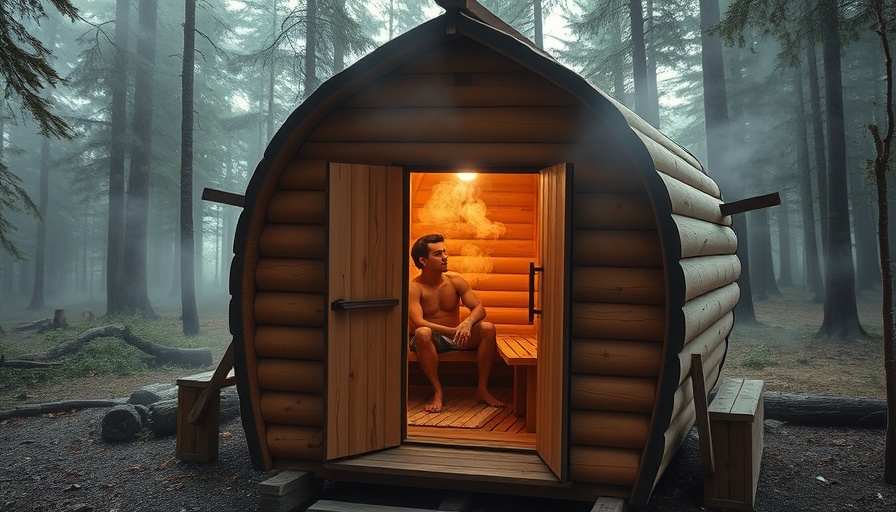
Embrace the Serenity: Discover the Appeal of Outdoor Saunas
Outdoor saunas have transitioned from a luxury to an accessible wellness sanctuary for many homeowners, regardless of the size of their outdoor space. These charming wood structures offer a compelling combination of relaxation, health benefits, and a touch of nature right in your own backyard. They not only amplify outdoor living experiences but also provide a perfect escape from the daily grind, adding value to your home aesthetic.
Why Outdoor Saunas are Worth the Investment
Many might perceive outdoor saunas as a luxury reserved for spacious backyards, but the recent surge in compact designs is changing that narrative. Regardless of whether you have a sprawling garden or a quaint urban patio, there’s an outdoor sauna that can seamlessly fit into your space. The sauna experience offers various health benefits, including improved muscle recovery and increased cardiovascular health, making them ideal for homeowners looking to enhance their well-being at home.
Top Picks for Every Space: Compact and Stylish Saunas
According to the experts at Gardenista, various models cater to different aesthetics and space requirements. Notable mentions include:
- Almost Heaven Audra 4-Person Barrel Sauna: Emphasizing traditional with Cedar construction, this compact sauna starts at $6,025 and accommodates up to four people comfortably, ideal for families.
- Plunge Sauna Mini: With its ultra-compact design for $9,990, this model caters to individuals looking for a high-tech sauna experience that can sync with smartphones.
- Redwood Outdoors Mini-Cube Sauna: This compact outdoor sauna fits well within tighter spaces, designed for two people, and is made from durable, heat-treated wood.
Your Guide to Practical Features: What to Look For
When selecting an outdoor sauna, it's vital to assess your available space, desired sauna capacity, and additional features that can enhance your experience. Considerations include:
- Quality Materials: Opt for wood types known for their resistance to weather, like red cedar, which is not only sturdy but also aesthetically pleasing.
- Design: Barrel saunas offer a smaller footprint while accommodating more people. They also provide a unique look that can become an attractive feature within your garden.
- Heat Source: Traditional saunas typically offer higher temperatures compared to their infrared counterparts. Most outdoor models range between 180°F and 200°F, ideal for maximizing health benefits.
Maximizing Your Outdoor Experience
Not only do outdoor saunas provide a space for physical relaxation, but they also enhance your overall home experience. Imagine taking a moment after a long day, stepping into a warm, inviting sauna surrounded by nature. This experience fosters mental well-being, a reprieve from daily stress, and encourages mindfulness.
Addressing Common Misconceptions
Many individuals believe that outdoor saunas require extensive space or complicated installation processes. In reality, numerous compact options and installation kits simplify the experience, enabling nearly anyone to enjoy this wellness luxury without overwhelming commitments.
Incorporating Saunas into Your Lifestyle
For homeowners contemplating the addition of an outdoor sauna, it’s essential to view this not just as a purchase but as an investment in health and lifestyle. Regular sauna usage can increase relaxation, enhance social interactions, and provide multiple physical health benefits.
Take the Leap: Transform Your Backyard into a Wellness Haven
Investing in an outdoor sauna is a decision that can elevate your home experience while offering unmatched health benefits. If you’ve been thinking about making your backyard a peaceful sanctuary, now’s the time to explore your options and find a sauna that speaks to you. With various styles available, including compact designs for small spaces, you can create a personal retreat that resonates with your outdoor living vision.
Ready to explore outdoor saunas and find the perfect fit for your home? Contact us today to connect with expert contractors who can help you choose and install the right sauna for your unique space!
 Add Row
Add Row  Add
Add 




Write A Comment